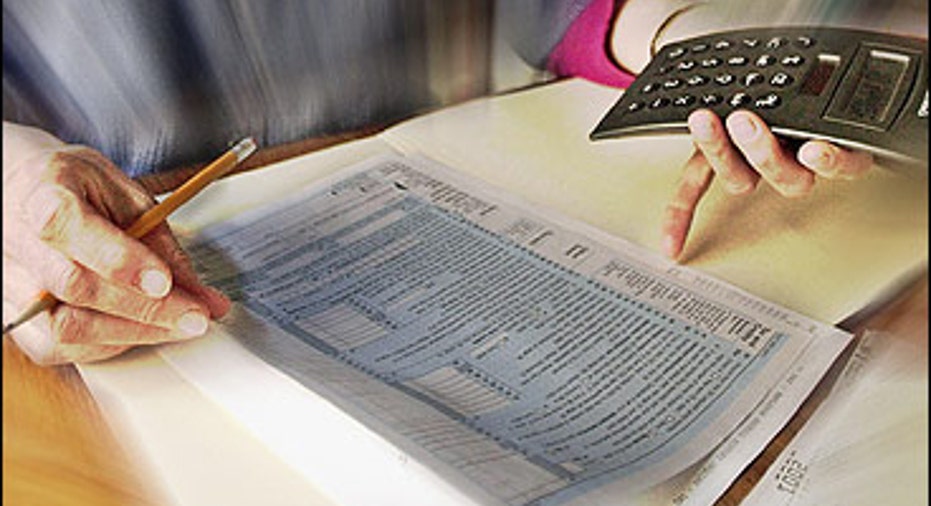Electronically File Your Tax Return

You've decided it's finally time to take that big technological tax step. This year, you're e-filing.
You definitely won't be alone. For the last several years, the number of taxpayers electronically filing their returns has increased.
Not surprisingly, e-filing comes in two waves: early filers, who generally are getting tax money back and like the speed e-filing offers in getting the refund process going, and taxpayers who wait until just before the tax deadline to hit the "enter" key.
E-filing by the numbers
In addition to the appeal of more precise time control over your 1040's delivery, electronic filing offers several more attractions. In most cases, the computer filing programs have all the forms you'll need and they are regularly updated. That's important because Congress often makes last-minute changes to tax laws that delay publication of forms. By using software, you'll get the current and correct filing material sooner.
You're also taken step-by-step through the filing process. And the electronic calculators make fewer mistakes, as long as you enter the correct numbers.
But the most appealing e-filing advantage: Your return gets to and is processed by the Internal Revenue Service sooner. The IRS says turnaround on an e-filed return is, generally, less than two weeks. That speed is especially welcome if you're expecting a refund, which the agency says it can get to you in around 10 days if you e-file and have the refund directly deposited.
Even better, there are a variety of ways to electronically submit your return. Here's a look at your e-file options.
Hire a tax professional
The IRS says computer filing through an authorized tax professional has been the core of e-filing since the system debuted in 1986. Paid tax preparers work with clients to complete their returns and then send them electronically to the IRS. Some preparers take care of the whole process, getting the taxpayer's raw data, exploring appropriate tax breaks, filling in the electronic forms and then submitting them. Others let the taxpayer fill out a paper return and then simply transfer that information to the electronic format for filing.
Do-it-yourself options
If you're comfortable doing your own taxes, you can purchase tax software and put it on your computer. This filing segment continues to grow each tax year. You can either pick up the program at your neighborhood electronics store or department store, or go to the company's website and download it. These packages promise to save you time as well as cash. Just make sure you choose software that fits your filing (and computer) situation.
E-file Online
Don't want to clutter up your computer with a program you use just once a year? Go directly to one of the many tax software websites and e-file directly online. In some cases, online filing is free. Even if you do have to pay for the service, it's generally cheaper than buying the software and you don't have to worry about working through any glitches that pop up when you load a new program onto your computer. Some people, however, aren't comfortable with their personal tax information floating out there in cyberspace if they can't complete and file their Form 1040 in one online visit.
Use the Free File Alliance
Each of the three previous e-file options might cost you. But you may be able to file for free if you meet criteria established by the various members of the Free File Alliance, a government-tax software industry partnership created to encourage more e-filers. The 2012 Free File program opened its e-doors this year on Jan. 17 and you can find participating members at the IRS' special Web page. While the Alliance makes it cheap and easy for many taxpayers to file, it's not available to everyone. The major determinant is your income.
This filing season, only individuals with adjusted gross incomes of $57,000 or less can use the tax prep software and e-file for no charge. However, the IRS has added Free File Fillable Forms to the program, which can be used by any taxpayer, regardless of income. You won't have access to online software with this option, but if you know what information goes on your Form 1040, you can type it in and send it directly, for free, to the IRS.
Other Electronic Tax Considerations
E-filers also should look into the electronic transfer of tax money -- either a refund coming to you or money you owe the IRS.
You can have your refund directly deposited to a chosen account by giving the IRS your personal account details. This should shave a few more days off the wait for your refund.
If you owe, you can have money sent directly to Uncle Sam through several e-payment methods, from credit card payments (remember you'll also have to pay a processing fee) to direct transmission of the money to the IRS. With the latter, known as the Electronic Federal Tax Payment System, or EFTPS, you can even e-file your return that day but schedule your payment for the tax filing deadline.



















